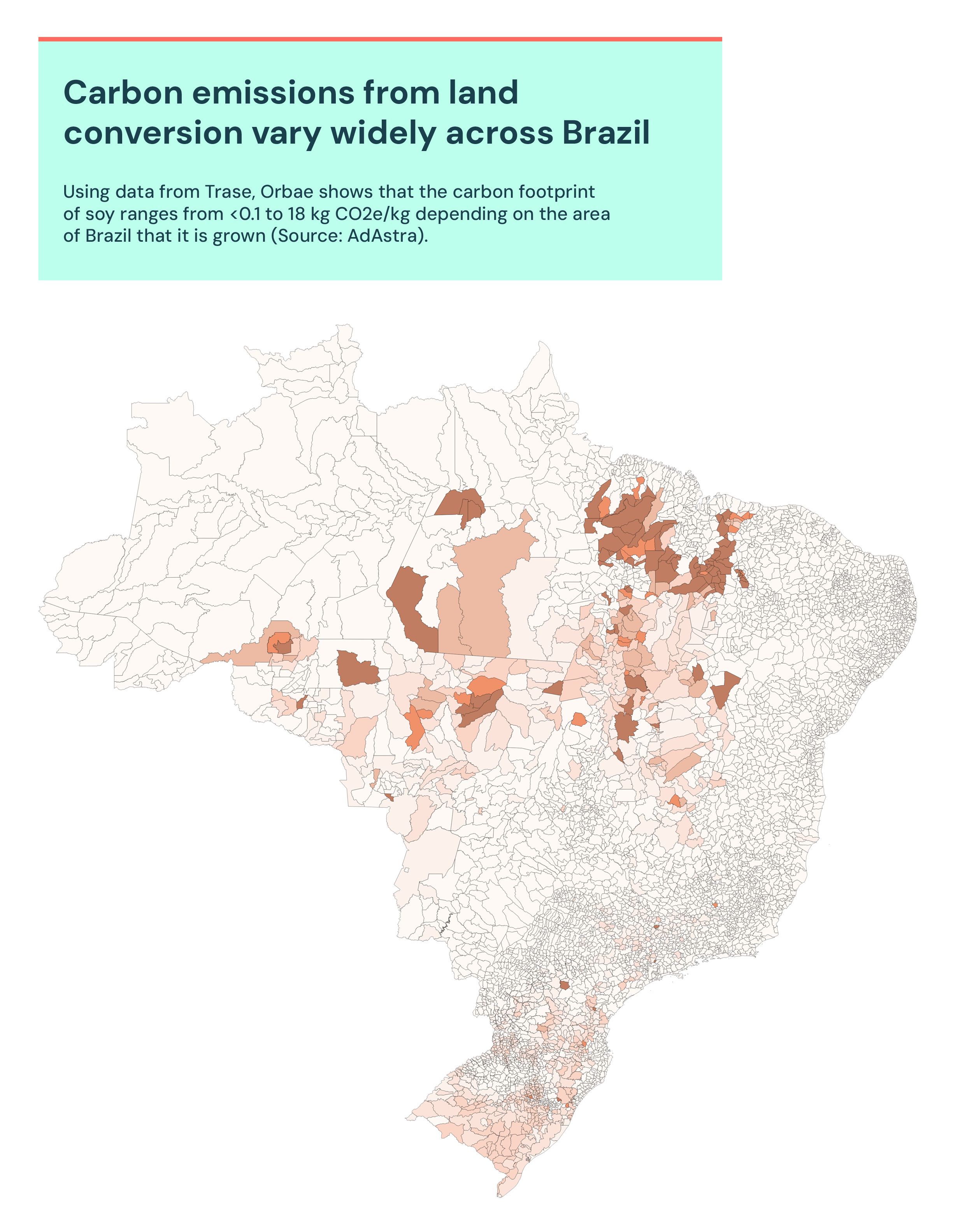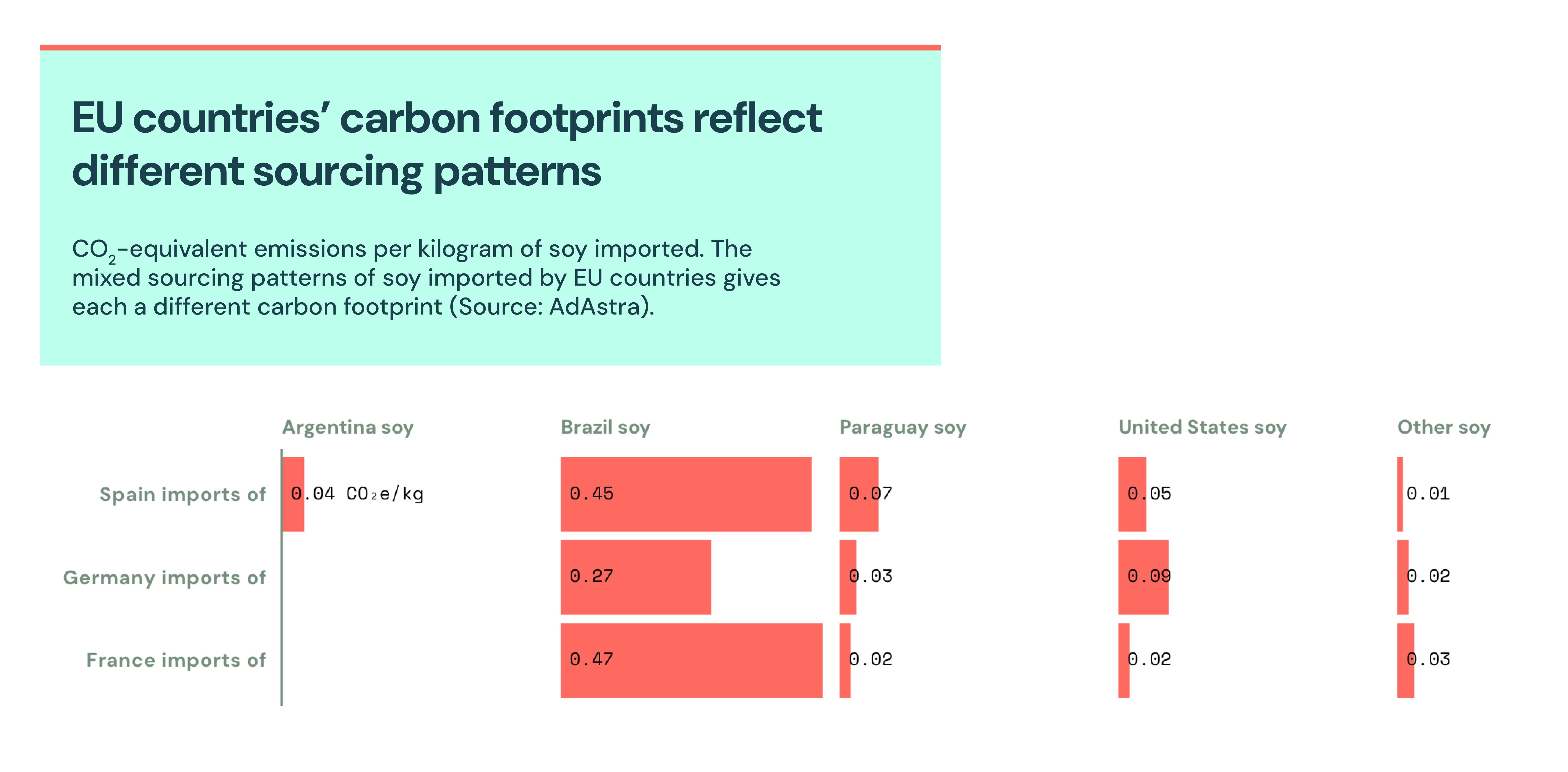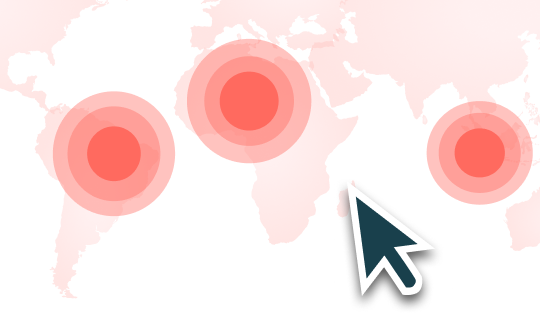Trase teamed up with sustainability consultancy AdAstra to help a leading food manufacturer understand how soy in animal feed changes the carbon footprint of its chicken products. Using data from Trase, AdAstra identified the origins of the soy and calculated corresponding land conversion emission factors at subnational level with their data solution Orbae. The insights generated by the solution enable companies to take action on their land conversion hotspots with high-accuracy data, regardless of their traceability knowledge.
The expansion of soy production is one of the main drivers of deforestation and land conversion, which damages biodiversity and releases greenhouse gases that contribute to climate change. To limit the increase in global warming to 1.5°C, it is widely accepted that deforestation must stop by 2030.
Soy is one of the main ingredients in chicken feed and is grown in countries such as Brazil and imported into Europe. The EU imports 40 million tonnes of soy per year where it is used largely for animal feed.
Companies in the food sector are increasingly aware of the need to disclose greenhouse gas emissions from land conversion linked to soy and other agricultural commodities used in their product supply chains. The Greenhouse Gas Protocol, the internationally recognised carbon accounting standard, is developing guidance for greenhouse gas emissions from land conversion. In addition, guidance from the Science Based Targets initiative requires companies in land-intensive sectors to consider emissions from forest, land and agriculture.
Sustainability consultancy AdAstra partnered with Trase to support its Orbae carbon footprinting technology, which builds data that helps companies understand their greenhouse gas emissions from agricultural land conversion at any level of traceability. The value of Orbae is shown by recent work with a leading food manufacturer committed to doing its part to address the climate impacts of its supply chain.
Understanding land conversion emissions from soy in chicken production
The company knew that soy used in feed for chicken production in the EU was likely to be a carbon ‘hotspot’ in their supply chain, as some 40–70% of the climate impacts of poultry come from land conversion from animal feed ingredients. However, to guide effective action, the company needed more detailed information about the environmental impacts of the soy used in chicken feed. To do so, they first needed to determine the origins of the soy imported to the EU.
AdAstra used global trade data to identify the major exporters of soy imported into the EU. Most comes from Argentina, Brazil, Paraguay and the US. For each of these countries except for the US, AdAstra used Trase’s subnational data for soy production to quantify the land conversion emissions associated with each location, in line with the Greenhouse Gas Protocol. This showed that the emissions vary widely. In Brazil for example, the variance was from less than 0.1 kilogramme of carbon dioxide equivalent per kilo of soy to 18 kg CO2e/kg soy depending on the sourcing area.

The updated land conversion emission factors greatly improved the accuracy of the carbon footprint of the chicken produced in the EU. It showed that the footprint was actually 35% lower than expected had the carbon emissions been calculated using country-level data typically found elsewhere.
It also showed that the carbon footprint varied by EU country, as each imports soy from a different mix of producing regions. For example, soy imported into Spain had a larger footprint (0.62 kg CO2e/kg) compared to France (0.54 kg CO2e/kg), and larger still than Germany (0.41 kg CO2e/kg).

The results also showed that the conversion of non-forest vegetation to soy plantations, such as in parts of Brazil’s Cerrado, made up about one-third of the carbon footprint of soy production. Including conversion of non-forest vegetation is critical for companies disclosing their emissions as it is required by the Greenhouse Gas Protocol.
Supporting effective decision making and carbon management
Using the insights provided by AdAstra and Trase, the company now has the information it needs to inform more effective decision making over how to address the climate impacts associated with the soy in the chicken feed used in its supply chain. By providing greater accuracy on where their commodity supplies are linked to the greatest environmental impacts, the company can target engagement with stakeholders in those locations and encourage improvements at the landscape level.
For further information contact Dr Carina Mueller, researcher, carina.mueller@sei.org
Download this case study as a PDF.
Was this article useful?





